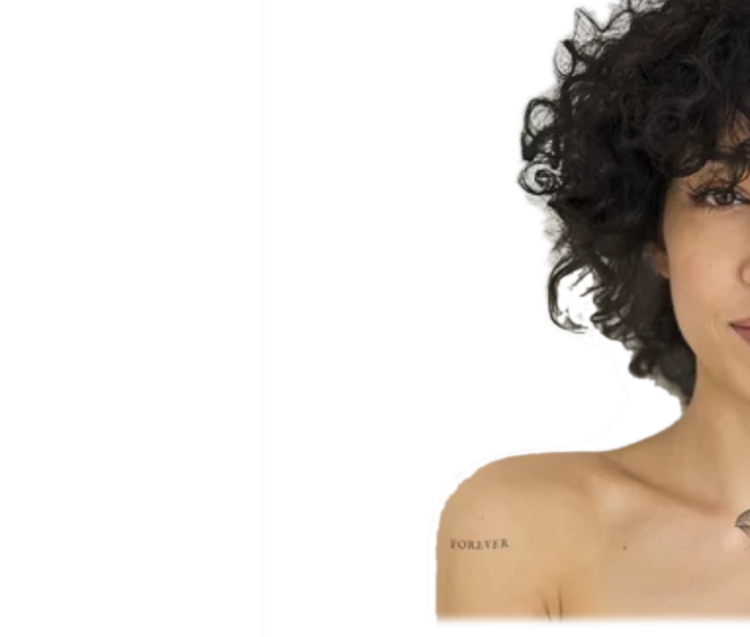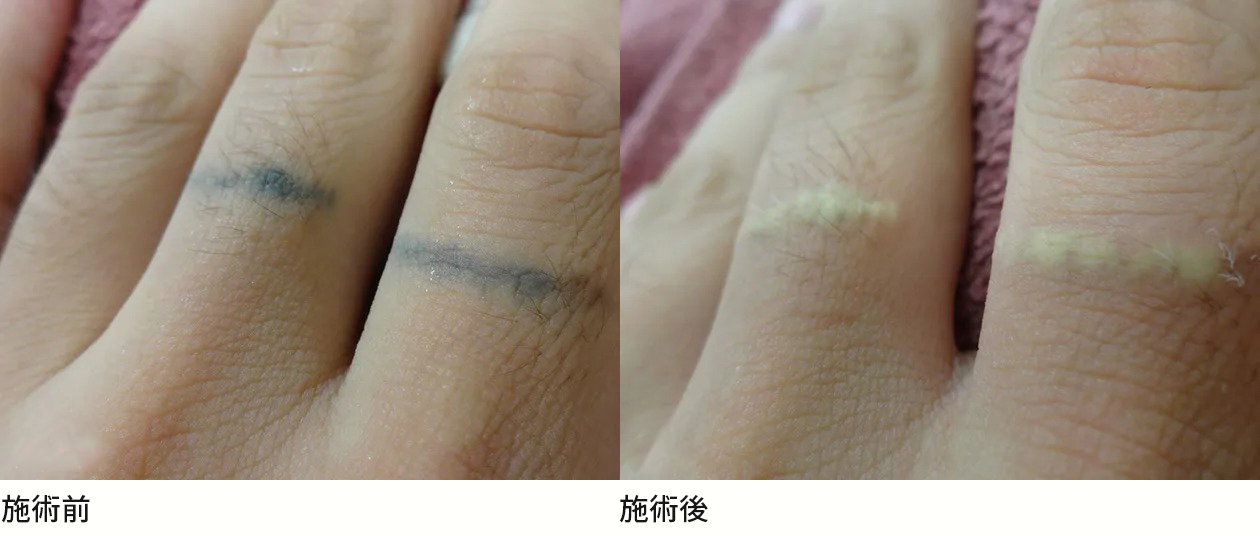Tattoo(tattoo)Removal

Tattoo(tattoo)Removal
Tattoo(tattoo)
Removal
Removal
Free medical treatment (not covered by insurance)
Removes tattoo pigments without causing any damage to the skin.
You can erase it.
You can erase it.
After irradiation, the pigment decreases and it becomes less noticeable as shown in the photo even after just one treatment.The pain during laser irradiation is similar to that of popping a rubber band, but for those who are sensitive to pain, a topical anesthetic will be used. (Pain varies from person to person). Using a Q-switched laser, laser light is irradiated to destroy the pigment in a short time of a few billionths of a second.

| Treatment time | About 5 minutes |
|---|---|
| Treatment interval | 1 month or more |
| pain | None |
| Side effects | Report does not. |
Case photo
Tattoo pigments can be removed with little damage to the skin. Even after just one treatment, it will become less noticeable as shown in the photo.

| Number of treatments | 2 times |
|---|---|
| cost | 40,000 (44,000) |
| Risk: side effects | Temporary redness and itching may occur. |

| Number of treatments | 1 times |
|---|---|
| cost | 15,000 (16,500) |
| Risk: side effects | Temporary redness and itching may occur. |
Prices
| Test irradiation | 10,000 Yen 11,000 |
|---|
*Details such as the number of treatments and duration will be provided after the test irradiation.We do not suddenly perform extensive treatment or recommend expensive treatment.Since there are individual differences depending on the depth and color of the pigment, we recommend test irradiation.
Risk, side effects, complications
Surgical tattoo removal involves long downtime and the risk of hypertrophic scarring and keloids.Even lasers may not be effective and may cause burns if they are not irradiated according to the color of the tattoo. Due to the strong energy of the YAG laser, some subcutaneous bleeding or mild burns may occur at the irradiation site, but if you care for the wound with a wound dressing, you will not feel any pain and will heal in a short period of time.Depending on the amount, depth, and type of pigment, multiple treatments may be required, so a test irradiation will be performed.We recommend irradiating all areas once you are satisfied with the improvement and progress.




